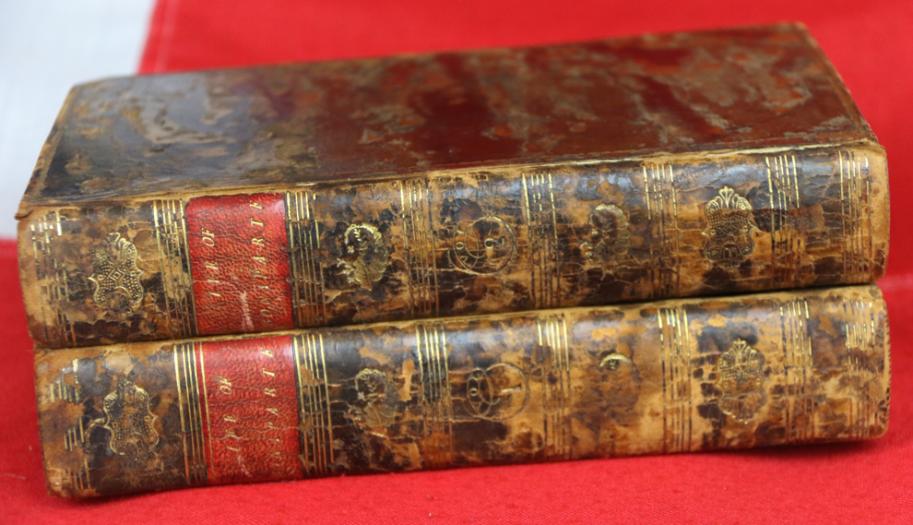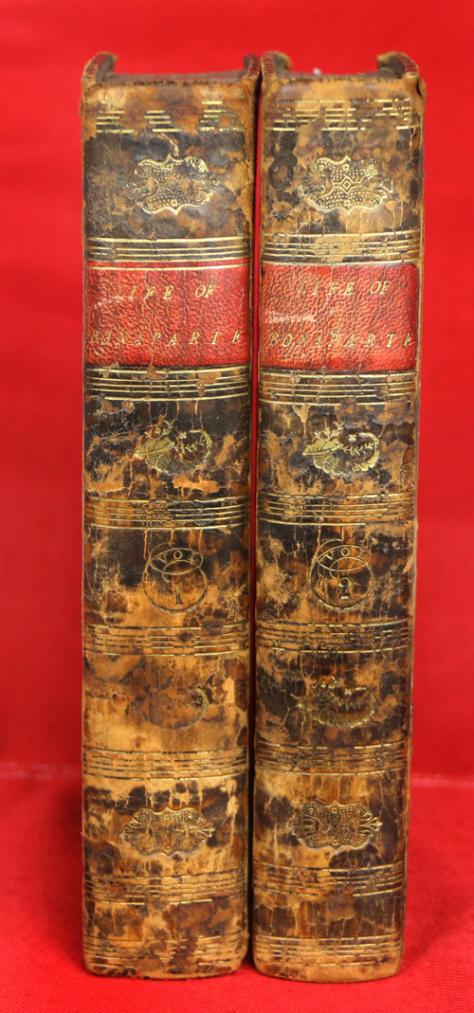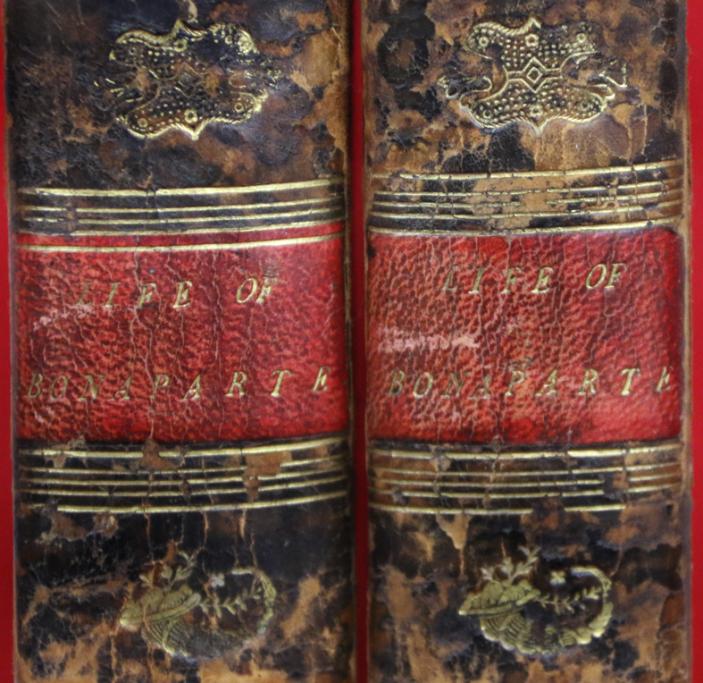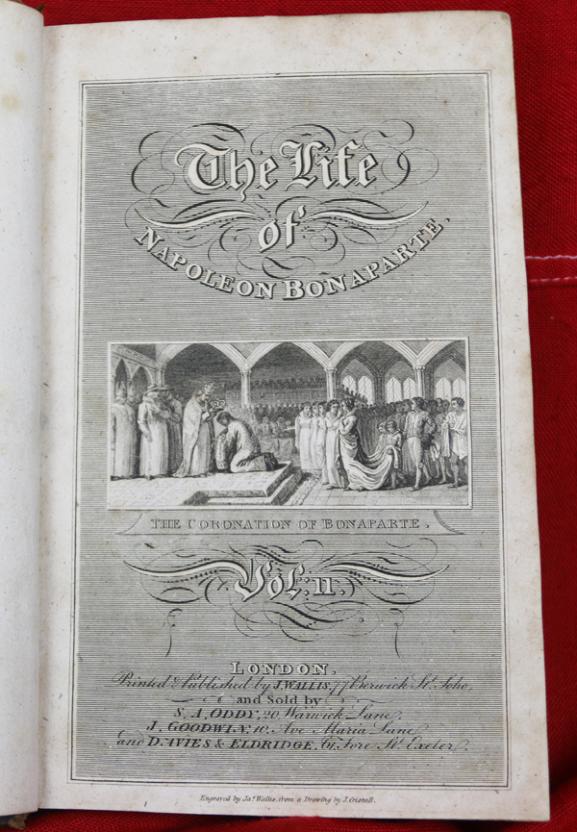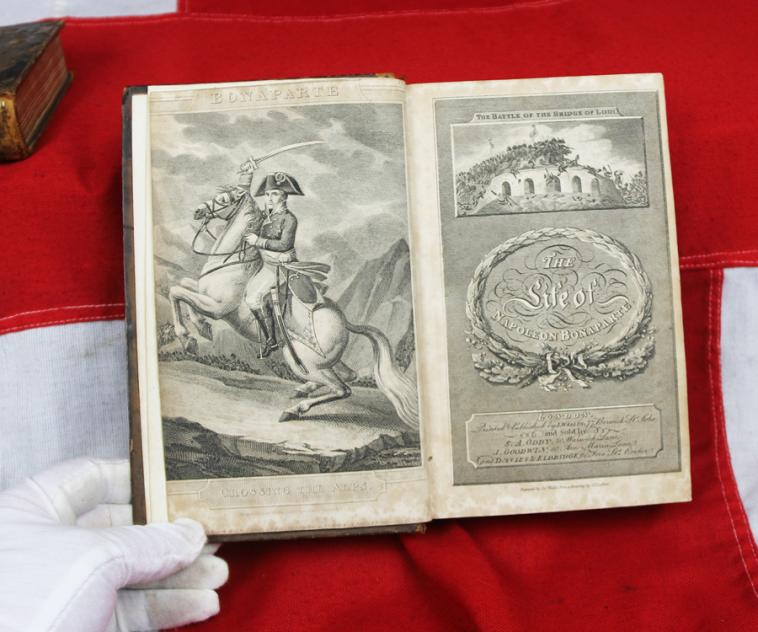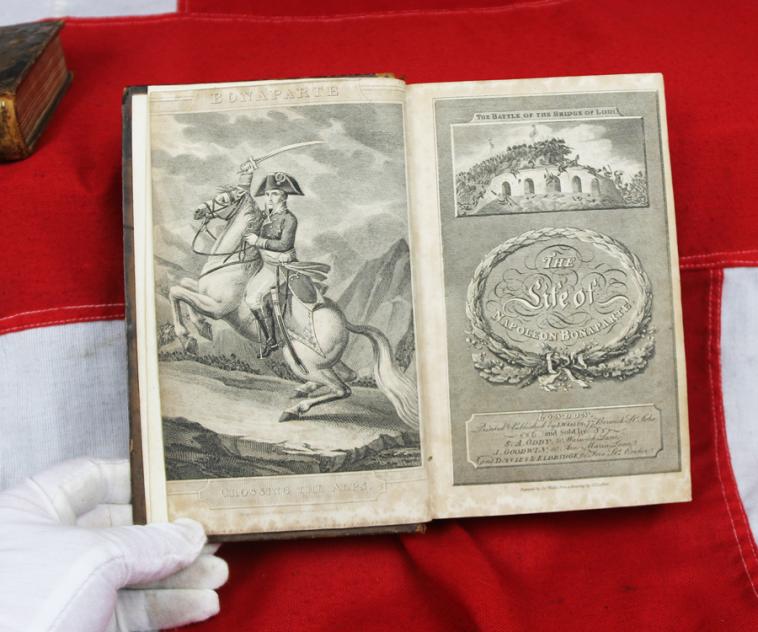1st Edition Napoleon, by Hewiston W. B. The Life of Napoleon Bonaparte. In Two Volumes Printed in 1814
London: Printed & Published by J. Wallis, and sold by S. A. Oddy, J. Goodwin, and Davies & Eldridge, Exeter, c. 1810
London: Wallis, 1814. 1st Edition. Hardcover. Two volume set. Good condition.
Illustrated with numerous b/w engraved plates. A popular British life of Napoleon. The two volumes are the first edition which ends with Napoleon's abdication to Elba. Photos to add of both books on Monday 23rd. Each volume is 8.25 inches x 5.25 inches x 1.25 inches
Napoleon Bonaparte (1769-1821), also known as Napoleon I, was a French military leader and emperor who conquered much of Europe in the early 19th century. Born on the island of Corsica, Napoleon rapidly rose through the ranks of the military during the French Revolution (1789-1799). After seizing political power in France in a 1799 coup d’état, he crowned himself emperor in 1804. Shrewd, ambitious and a skilled military strategist, Napoleon successfully waged war against various coalitions of European nations and expanded his empire. However, after a disastrous French invasion of Russia in 1812, Napoleon abdicated the throne two years later and was exiled to the island of Elba. In 1815, he briefly returned to power in his Hundred Days campaign. After a crushing defeat at the Battle of Waterloo, he abdicated once again and was exiled to the remote island of Saint Helena, where he died at 51. Napoleon was, and remains, famous for his battlefield victories, and historians have spent enormous attention in analysing them. In 2008, Donald Sutherland wrote:
The ideal Napoleonic battle was to manipulate the enemy into an unfavourable position through manoeuvre and deception, force him to commit his main forces and reserve to the main battle and then undertake an enveloping attack with uncommitted or reserve troops on the flank or rear. Such a surprise attack would either produce a devastating effect on morale, or force him to weaken his main battle line. Either way, the enemy's own impulsiveness began the process by which even a smaller French army could defeat the enemy's forces one by one.
After 1807, Napoleon's creation of a highly mobile, well-armed artillery force gave artillery usage increased tactical importance. Napoleon, rather than relying on infantry to wear away the enemy's defences, could now use massed artillery as a spearhead to pound a break in the enemy's line. Once that was achieved he sent in infantry and cavalry.
Code: 23379
750.00 GBP

